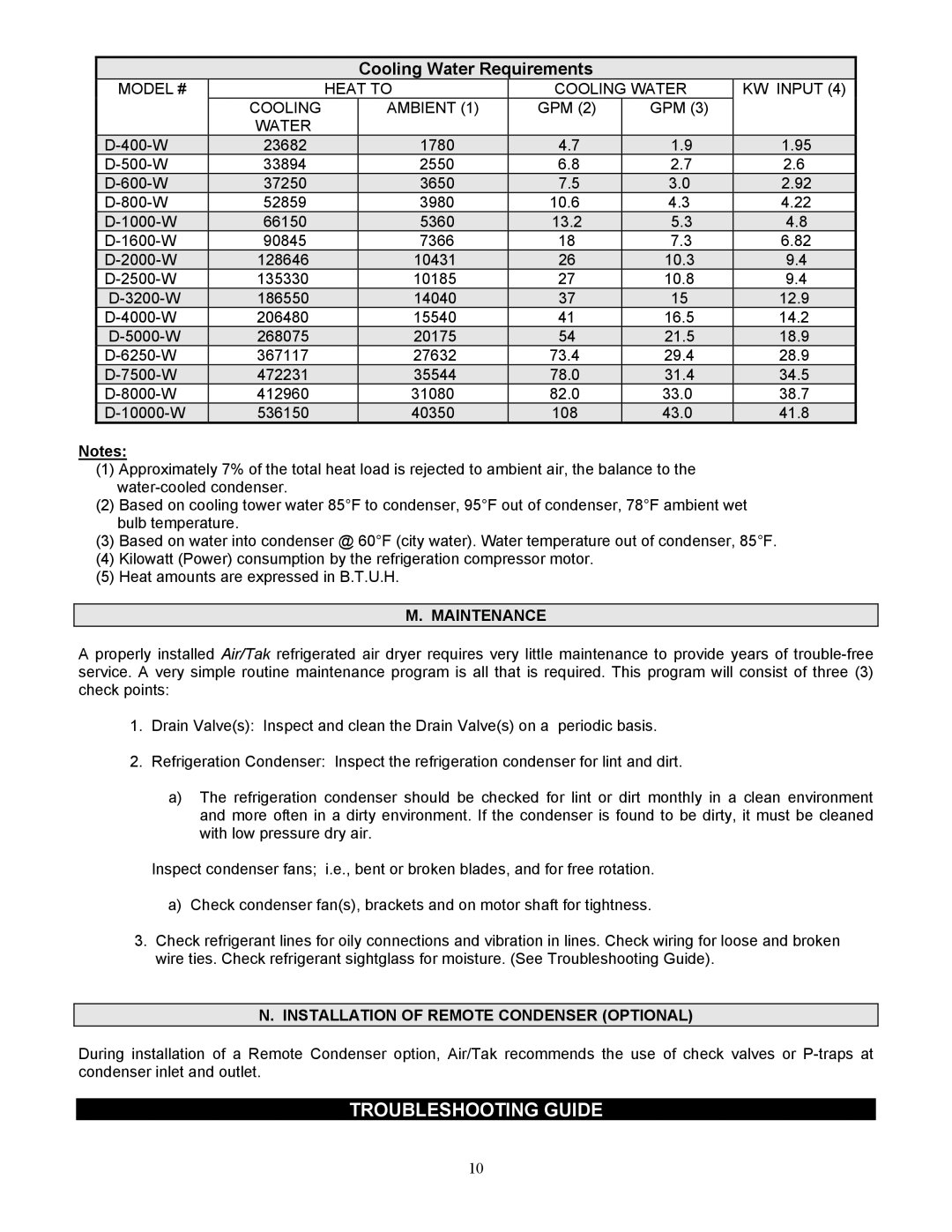
Cooling Water Requirements
| MODEL # |
| HEAT TO | COOLING WATER | KW INPUT (4) | |||
|
| COOLING |
| AMBIENT (1) | GPM (2) | GPM (3) |
|
|
|
| WATER |
|
|
|
|
|
|
| 23682 |
| 1780 | 4.7 | 1.9 | 1.95 |
| |
| 33894 |
| 2550 | 6.8 | 2.7 | 2.6 |
| |
| 37250 |
| 3650 | 7.5 | 3.0 | 2.92 |
| |
| 52859 |
| 3980 | 10.6 | 4.3 | 4.22 |
| |
| 66150 |
| 5360 | 13.2 | 5.3 | 4.8 |
| |
| 90845 |
| 7366 | 18 | 7.3 | 6.82 |
| |
| 128646 |
| 10431 | 26 | 10.3 | 9.4 |
| |
| 135330 |
| 10185 | 27 | 10.8 | 9.4 |
| |
| 186550 |
| 14040 | 37 | 15 | 12.9 |
| |
| 206480 |
| 15540 | 41 | 16.5 | 14.2 |
| |
| 268075 |
| 20175 | 54 | 21.5 | 18.9 |
| |
| 367117 |
| 27632 | 73.4 | 29.4 | 28.9 |
| |
| 472231 |
| 35544 | 78.0 | 31.4 | 34.5 |
| |
| 412960 |
| 31080 | 82.0 | 33.0 | 38.7 |
| |
| 536150 |
| 40350 | 108 | 43.0 | 41.8 |
| |
Notes:
(1)Approximately 7% of the total heat load is rejected to ambient air, the balance to the
(2)Based on cooling tower water 85°F to condenser, 95°F out of condenser, 78°F ambient wet bulb temperature.
(3)Based on water into condenser @ 60°F (city water). Water temperature out of condenser, 85°F.
(4)Kilowatt (Power) consumption by the refrigeration compressor motor.
(5)Heat amounts are expressed in B.T.U.H.
M. MAINTENANCE
A properly installed Air/Tak refrigerated air dryer requires very little maintenance to provide years of
1.Drain Valve(s): Inspect and clean the Drain Valve(s) on a periodic basis.
2.Refrigeration Condenser: Inspect the refrigeration condenser for lint and dirt.
a)The refrigeration condenser should be checked for lint or dirt monthly in a clean environment and more often in a dirty environment. If the condenser is found to be dirty, it must be cleaned with low pressure dry air.
Inspect condenser fans; i.e., bent or broken blades, and for free rotation.
a)Check condenser fan(s), brackets and on motor shaft for tightness.
3.Check refrigerant lines for oily connections and vibration in lines. Check wiring for loose and broken wire ties. Check refrigerant sightglass for moisture. (See Troubleshooting Guide).
N. INSTALLATION OF REMOTE CONDENSER (OPTIONAL)
During installation of a Remote Condenser option, Air/Tak recommends the use of check valves or
TROUBLESHOOTING GUIDE
10
